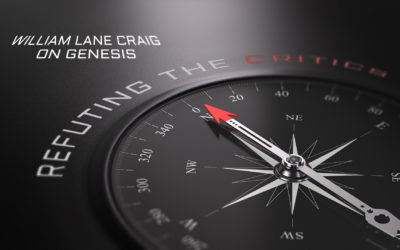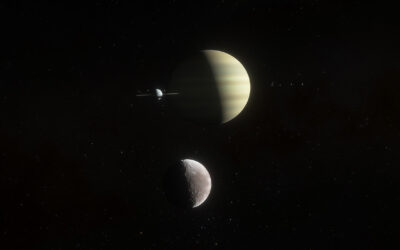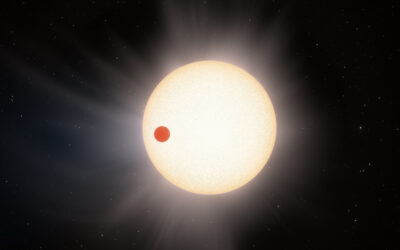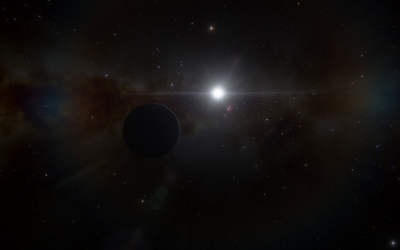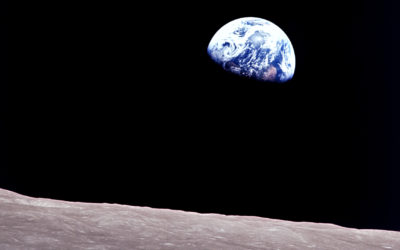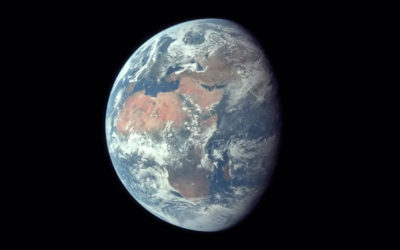ARTICLE ARCHIVES

The James Webb Space Telescope
The $10 billion James Webb Space Telescope is now on its way to the earth-sun L2 Lagrangian point where it will begin taking images of the most distant regions of the known universe. Many headlines claim that it will peer billions of years into the past to see the formation of the first galaxies after the big bang. But what is it about this telescope that is so innovative, and what will it really discover?
The Historical Adam – Part 8: Closing Remarks
In this final segment, we continue to critique William Lane Craig’s claim that Genesis 1-11 is mytho-history. The New Testament often quotes from the Old Testament as if the events recorded therein actually happened. Craig attempted to show that some such references may not be endorsing the historicity of such events, but merely using them as literary illustrations. However, none of the examples he provided suggested anything other than a reference to actual historical events. There is nothing wrong with using a fictional story to illustrate a point. But there is no evidence that any biblical author thought of Genesis as anything but straightforward history.
The Historical Adam – Part 7: New Testament References
In analyzing William Lane Craig’s comments on Genesis in his recent article in First Things, we have seen that when New Testament authors quote or allude to Old Testament passages (including Genesis 1-11), they do so as if these events really occurred and often with consequences for our present world. This would seem to be further evidence that Genesis 1-11 is historical narrative, as the text itself indicates along with its context.
The Historical Adam – Part 6: Truth vs. Truth-in-Story
We begin with a brief review of our analysis of William Lane Craig’s claims regarding Genesis 1-11 from his recent article on the historical Adam. We have seen that Genesis 1-11 has all the markers of historical narrative. Namely, it is written in the same...
The Historical Adam – Part 5: Textual Considerations
We here continue to examine William Lane Craig’s claim that Genesis 1-11 is not meant to be read as literal history.
The Historical Adam – Part 4: “Mytho-History?”
We have been exploring inconsistencies in William Lane Craig’s comments on Genesis. Recall that Craig had attempted to reclassify Genesis 1-11 as myth by claiming it had similarities to Ancient Near Eastern origins stories. We found this claim to be false. Craig then equivocated on the meaning of the word ‘myth’ in order to convince his followers that Genesis is not literal history. This is a bait-and-switch fallacy. In fact, Craig did not present any evidence that Genesis should be taken as anything but literal history. His rejection of a literal Genesis does not stem from an exegetical reading of the text, or proper reasoning from Scripture, but rather from his acceptance of the secular stories of deep time, Darwinian evolution, and the big bang.
The Historical Adam – Part 3: A Worldview Based on Fact or Fiction
Every year, citizens of the United States celebrate Independence Day on July 4. But why? Suppose someone answered, “That is the date in which the fictional characters Steve Miller and David Levinson saved the world from invading extraterrestrials, as shown in the sci-fi movie Independence Day. That is why we celebrate on the 4th of July.” That would be absurd because the reality of our independence cannot be based on fictional events in a movie.
The Historical Adam – Part 2: Myth or Reality?
We have been examining the claims of William Lane Craig regarding the historicity of Genesis 1-11. Craig argued that there is similarity between the creation account in Genesis and creation myths of the ancient Near East (ANE). But we found that this is not the case, in that ANE creation myths are always polytheistic, and generally involve a chaos monster that is defeated in order to produce the good earth we have today. However, Genesis is the opposite in starting with one all-powerful God who created a very good earth, and in which humans introduced chaos/death by rebelling against that God.
The Historical Adam – Part 1: an Introduction
William Lane Craig is a professor of philosophy at Houston Baptist University. Although he is known as an apologist, his approach is based on man-centered philosophy rather than biblical authority. As such, Craig rejects the history recorded in Genesis. He instead embraces the secular story of origins, including its timescale of billions of years. So, his latest article arguing against the literal history in Genesis came as no surprise. In his article, Craig attempts to persuade his readers that Genesis is a myth – a story that contains elements of truth but which is not to be understood literally. This is a significant departure from the faith once and for all delivered to the saints (Jude 3). So, let’s examine the more pertinent parts of Craig’s article and see if his reasoning is sound.
Extrasolar Planets – Part 3
We have been examining the recent discoveries of extrasolar planets – those planets that orbit a star other than the sun. Several thousand exoplanets have been discovered. In many instances, we know only the orbital period and minimum mass of the planet. In cases where the planet passes directly in front of its star, we are also able to estimate the size of the planet, its true mass, and therefore its density. But through some careful measurements and ingenious reasoning, there is additional information we can learn about exoplanets. And these new discoveries challenge the secular view of origins.
Extrasolar Planets – Part 2
We have been examining extrasolar planets – planets that orbit a star other than the sun. The first exoplanets were discovered by measuring the slight wobble their gravity induces on their star. Amazingly, and despite the challenges involved, around 50 exoplanets have now been directly observed using powerful telescopes. But the majority of exoplanets have been discovered using the transit method. This technique, along with the others, has allowed us to discover nearly 5000 extrasolar planets.
Extrasolar Planets – Part 1
Thirty years ago, the only known planets were those in our solar system. But now, astronomers have detected over 4,800 planets orbiting other stars in our galaxy. These extrasolar planets challenge secular origins scenarios and confirm biblical creation.
Debunking Flat-Earth Claims – Part 3
We have been examining the claims of a flat-earth advocate and found so far that all the evidence is consistent with a spherical earth with a radius of 3959 miles, and is inconsistent with a flat earth. We will continue to analyze Jeff’s claims (in purple font) below, along with my response in black.
Debunking Flat-Earth Claims – Part 2
We have been exploring the claims of a flat-earth advocate named Jeff. So far, his claims have not withstood mathematical scrutiny. The evidence we have explored so far has been completely consistent with a round earth, and refutes a flat earth. Here we continue to examine Jeff’s claims.
Debunking Flat-Earth Claims
In this article, we will deal with the claims of a flat-earth advocate named Jeff. Jeff is a friend of a friend of mine, who objected to some of the proofs I gave that demonstrate the earth is spherical. Since Jeff’s claims have been refuted elsewhere, I agreed to answer them but only if I could post them publicly on this website so that others may benefit. Jeff graciously agreed.


